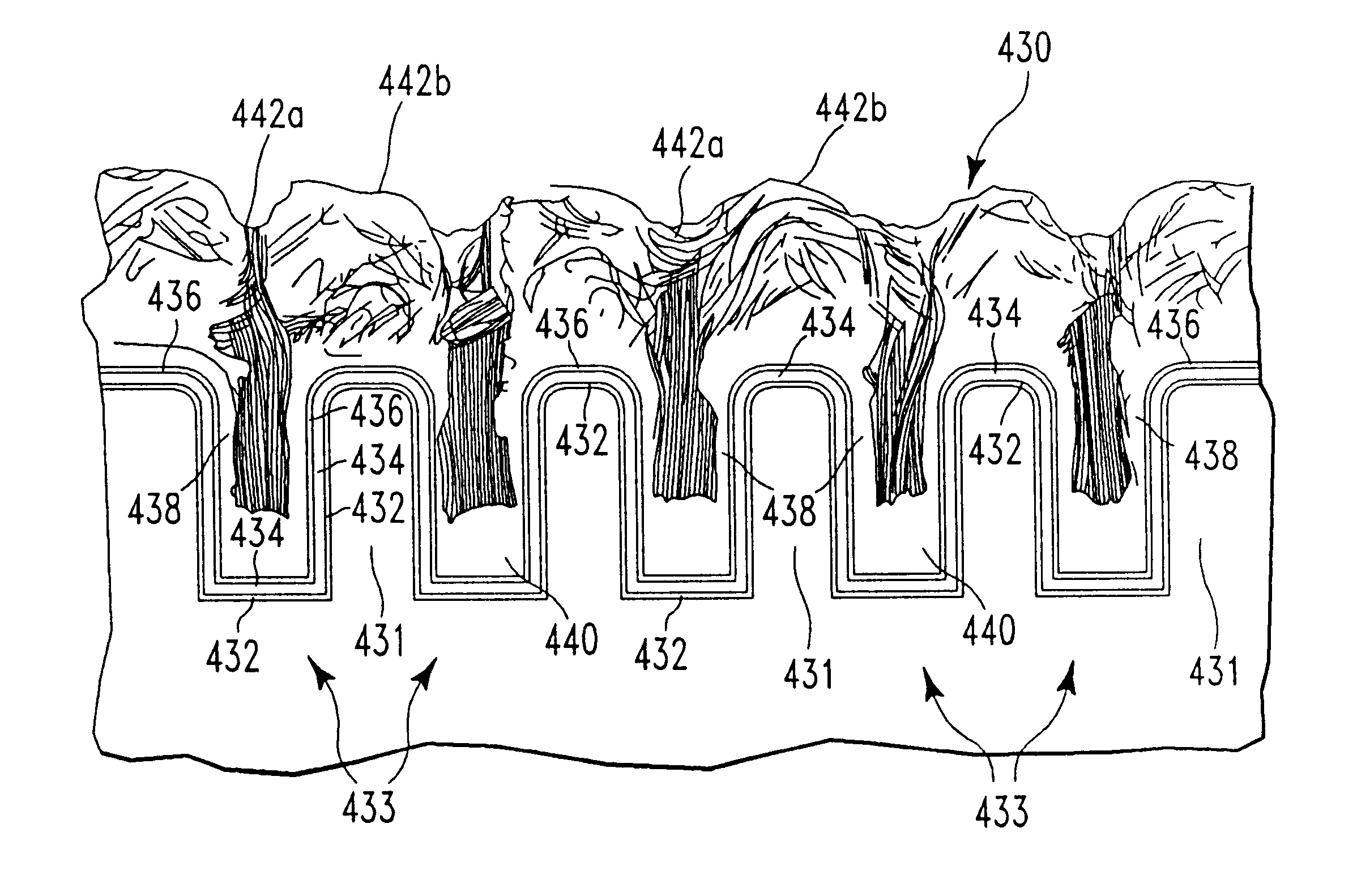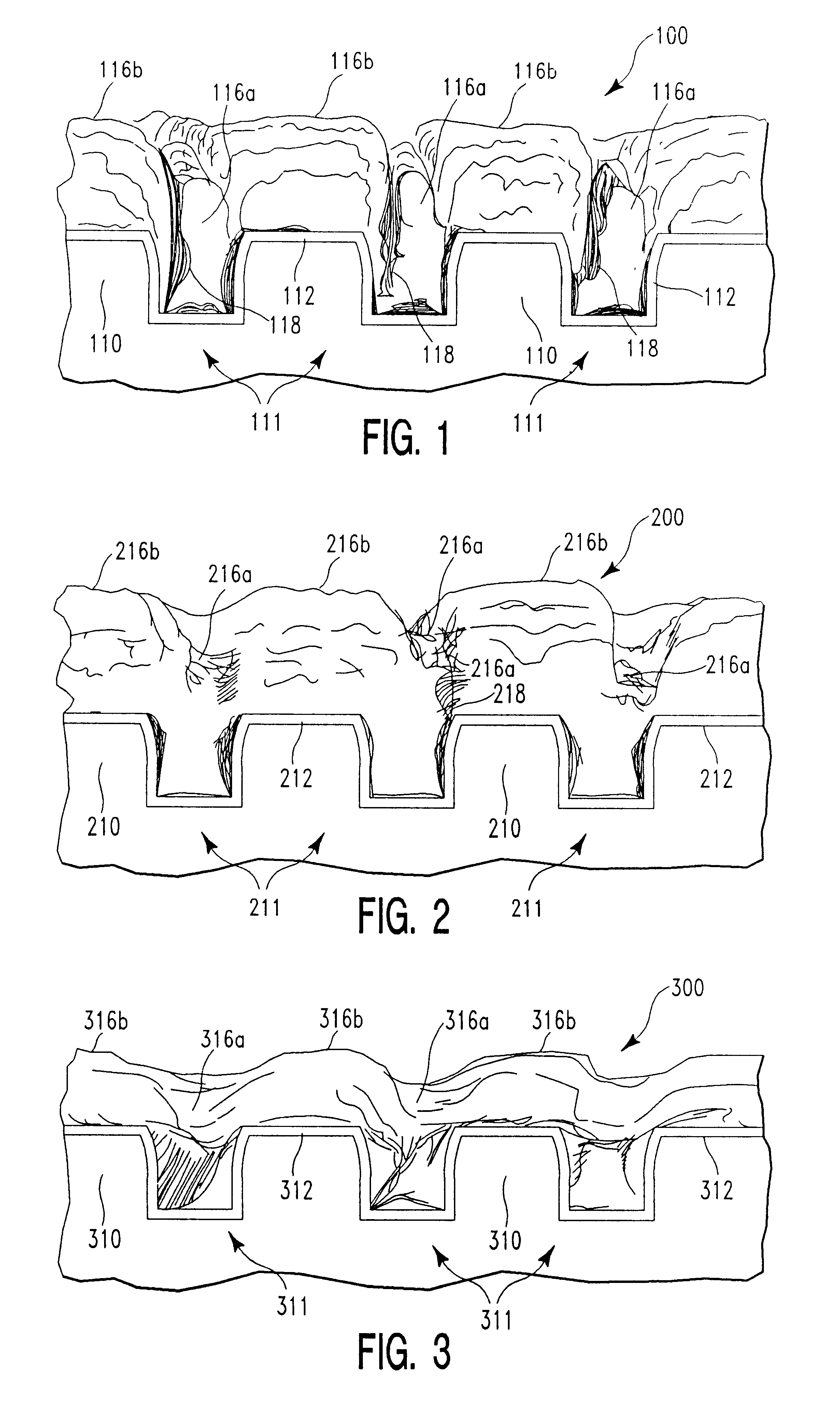Method of sputtering copper to fill trenches and vias
a trench and copper technology, applied in the field of sputtering copper to fill trenches and vias, can solve the problems of difficult to use the techniques known in the art to provide multi-level metallurgy processing, the reactive ion etching method often used for patterning a blanket metal cannot be practiced with copper, and the limited applicability of alternative deposition liftoff techniques
- Summary
- Abstract
- Description
- Claims
- Application Information
AI Technical Summary
Problems solved by technology
Method used
Image
Examples
example two
FIGS. 4A and 4B show a schematic of a cross-sectional SEM (400 and 430, respectively) of a silicon oxide substrate (410 and 431, respectively) having copperfilled trenches (411, and 433, respectively) in its surface. A barrier layer (412 and 432, respectively) of Gamma-sputtered tantalum was deposited to a substrate surface thickness of about 800 .ANG. (a sidewall thickness ranging from about 200 .ANG. to about 400 .ANG.) over the silicon oxide substrate. (Had a tantalum nitride barrier layer been used, the preferred method of application would have been reactive IMP sputtering in the presence of nitrogen). A wetting layer (414 and 434, respectively) of Gamma-sputtered aluminum, was deposited to a substrate surface thickness of about 1,000.ANG. (a sidewall thickness ranging from about 100 .ANG. to about 300 .ANG.) over the tantalum barrier layer. This was followed by a second wetting layer of IMP-sputtered copper (416 and 436, respectively), which was applied to a substrate surface ...
PUM
| Property | Measurement | Unit |
|---|---|---|
| temperature | aaaaa | aaaaa |
| temperature | aaaaa | aaaaa |
| temperature | aaaaa | aaaaa |
Abstract
Description
Claims
Application Information
 Login to View More
Login to View More - R&D
- Intellectual Property
- Life Sciences
- Materials
- Tech Scout
- Unparalleled Data Quality
- Higher Quality Content
- 60% Fewer Hallucinations
Browse by: Latest US Patents, China's latest patents, Technical Efficacy Thesaurus, Application Domain, Technology Topic, Popular Technical Reports.
© 2025 PatSnap. All rights reserved.Legal|Privacy policy|Modern Slavery Act Transparency Statement|Sitemap|About US| Contact US: help@patsnap.com



